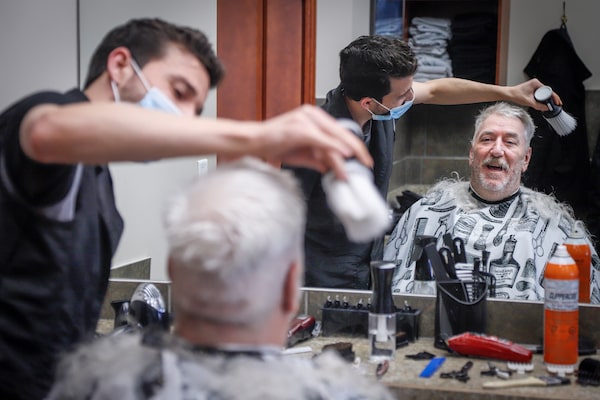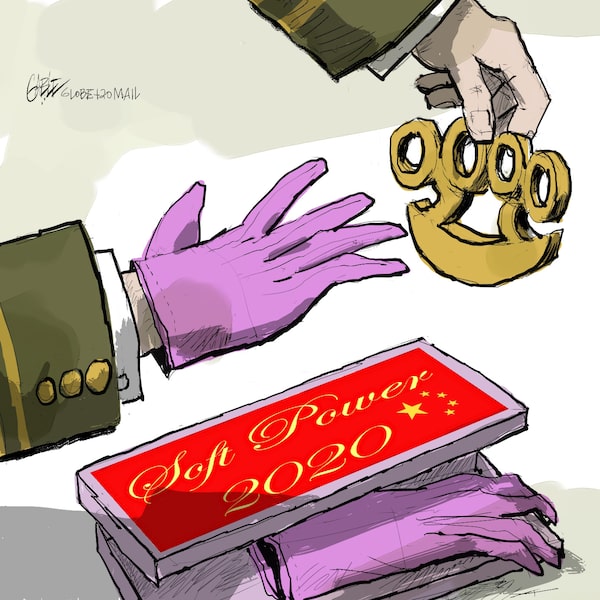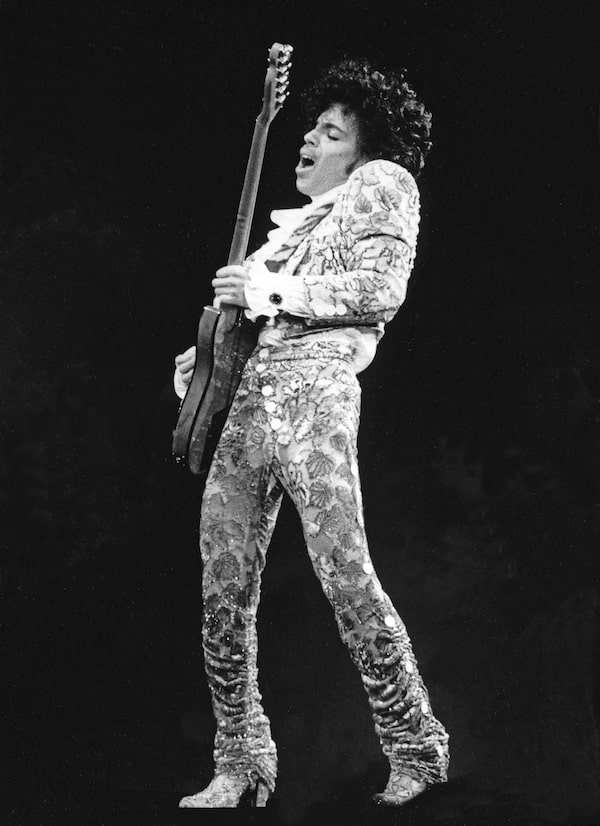Good morning,
You’ve heard time and time again how important testing will be during the pandemic. As officials have repeatedly emphasized, widespread testing is one of the cornerstones required for Canada to emerge safely from the lockdowns. That cornerstone has proved a heavy lift.
This week in Canada, about 25,000 tests a day were performed, which is less than half of the 60,000 daily tests that should be achievable.
Now, one doctor is suggesting a unique approach to perform 50,000 tests daily. There are hurdles to overcome before a system that was devised for counting up insect species can be repurposed for human medical samples – but he is not alone in proposing radical approaches as provinces look to reopen.

People line up at a mobile COVID-19 testing clinic, Thursday May 14, in Montreal North. Ryan Remiorz / The Canadian PressRyan Remiorz/The Canadian Press
This is the daily Morning Update newsletter. If you’re reading this on the web, or it was forwarded to you from someone else, you can sign up for Morning Update and more than 20 more Globe newsletters on our newsletter signup page.
Reopening across the country:
Parks Canada will allow a limited reopening of day-use facilities at national parks across the country on June 1, but camping won’t be available just yet. The government agency will resume some operations at national parks, historic sites, marine conservation areas and wildlife areas. Mr. Wilkinson noted the openings will be limited to trails, some boat launches and some of the day-use areas and washrooms.
- Premier François Legault announced that primary-school students in Montreal and area will not go back to class until the next school year at the earliest.
- Calgary is going to crack down on physical-distancing laws. The city, unlike the rest of Alberta, will have to wait until May 25 before people can dine in a restaurant, sit in a pub or get a haircut. Brooks, a city of about 15,000, is also on hold because of a high numbers of cases.
- Ontario will begin its gradual reopening next week, resuming all construction, restarting scheduled surgeries and allowing retail stores outside of malls to open. Social gatherings remain limited, but the government is looking into ways for people to see their family and friends safely.

Barber Salim Alhaj, cuts the hair of client, John Gee, of Calgary, who came to the Kingsview Barbershop on its re-opening in Airdrie, Alta., Thursday, May 14. Jeff McIntosh / The Canadian PressJeff McIntosh/The Canadian Press
Even as the death toll continues to mount, Britain shuts its special Nightingale hospital
The NHS Nightingale London was hailed as a triumph of ingenuity when it was opened on April 3, just nine days after work began on converting the ExCeL convention centre into a temporary hospital with capacity for 4,000 beds. But the patients never arrived in the expected numbers.
While Britain’s death toll has now surpassed Italy’s, London’s Nightingale facility never treated more than a few dozen patients at once. Critics say the saga of the Nightingale shows the government got its modelling wrong and was put into service before it was ready.
Other world news
- Africa’s biggest economy faces a double blow from oil crisis and surging pandemic
- As coronavirus overruns Russia, doctors are dying on the front lines
- Mumbai, India’s ‘Maximum City’, is engulfed by coronavirus
Got a news tip that you’d like us to look into? E-mail us at tips@globeandmail.com Need to share documents securely? Reach out via SecureDrop
ALSO ON OUR RADAR
Virtual signing ceremony marks recognition of Wet’suwet’en system of governance: The memorandum does not address Wet’suwet’en opposition to the pipeline, but states that the federal and B.C. governments recognize Wet’suwet’en rights and title from over a 12-month period on negotiations affecting jurisdiction.
Alberta Energy Regulator blocks sale of Shell assets over cleanup concerns: The regulator says Calgary-based Pieridae Energy’s attempted purchase of the southern Alberta assets from Shell Canada goes against the intent of environmental laws.
Federal spending on pandemic measures now at $151.7-billion: This week’s report, dated May 13, shows total spending has increased by nearly $6-billion since the last report on April 29.
Big banks are tightening lending standards for real estate investors: Other big lenders have become stricter with their due diligence, according to brokers, as the coronavirus crisis pummels the Canadian economy, leading to business closings and the loss of more than three million jobs since mid-March.
MORNING MARKETS
World stocks win a respite, oil prices jump: World stocks rose on Friday and oil prices rose, taking the sting out of a week that has seen sentiment hit as deteriorating U.S.-China relations added to worries over how fast economies could recover from the coronavirus shock. Around 6 a.m. ET, Britain’s FTSE 100 was up 1.46 per cent. Germany’s DAX and France’s CAC 40 were up 1.75 per cent and 0.94 per cent, respectively. In Asia, Japan’s Nikkei closed up 0.62 per cent. Hong Kong’s Hang Seng lost 0.14 per cent. New York futures were higher. The Canadian dollar was trading above 71 US cents.
Tax and Spend is a new series that examines the intricacies and oddities of taxation and government spending. Read the first analysis of the series here: Without income limit, Liberals give money to those not in need with $2.5-billion for seniors.
WHAT EVERYONE’S TALKING ABOUT
Maybe it’s too soon to panic over the deficit, but can’t we at least worry?
Andrew Coyne: “Then, we were poised for a tremendous victory over the deficit, after many years of struggle. Now, it seems like we are just getting started.”
Nationalizing care homes won’t necessarily improve the situation
John Ibbitson: “Apart from being expensive and invasive, there is insufficient evidence to justify eliminating private-sector nursing homes. Long-term-care insurance may be the better way to go. But before any government acts, we need more data.”
The real meaning of the SNC-Lavalin affair
Ralph Heintzman: “The lesson we should learn from the SNC-Lavalin affair, and from the U.S., is that we can no longer rely on conventions to preserve the firewall between politics and prosecution.” Heintzman is a senior fellow of Massey College in the University of Toronto.
TODAY’S EDITORIAL CARTOON

By Brian GableBrina Gable/The Globe and Mail
LIVING BETTER
Dark times call for bright, cheery clothing
It’s more than just a pandemic pastime, tie-dye is the comfort baking of the fashion world. Today’s tie-dye is tasteful, a far cry from yesteryear’s Grateful Dead-specific rainbow colours backing dancing bears, and can be found everywhere from running paths to the runways.
Micah Cameron, owner of Frankies Surf Club in Muskoka, an L.A.-style beach shop that specializes in tie-dyed sweatshirts and tees, says, “I’m a huge believer that when things are terrible in the world, colour prevails.”
Learn about the role this style plays in fashion today, or how to do it, if you want to try it at home for yourself.
Read more
- What property rights do the owners of second homes have in COVID-19 Canada?
- Working from home? Seven easy snack recipes to get you through the day
MOMENT IN TIME: May 15, 1985

American singer Prince in concert at Maple Leaf Gardens in Toronto, December 2, 1984. Photo by Dennis Robinson / The Globe and Mail.DENNIS ROBINSON/The Globe and Mail
Prince releases the single Raspberry Beret
In 1984, Tipper Gore was offended while listening to the Prince song Darling Nikki with her daughter. In her book Raising PG Kids in an X-Rated Society, the wife of the senator (and later vice-president) Al Gore wrote, “The vulgar lyrics embarrassed both of us. At first, I was stunned, but then I got mad.” And then she co-founded the Parents Music Resource Center, a pearl-clutching committee that issued its “Filthy 15” of unseemly songs, with Prince’s Darling Nikki topping the list. On May 15, 1985, the Minneapolis-based pop provocateur cheekily released Raspberry Beret, a psychedelic-pop gem about the innocent small-town love between a drugstore boy and an audacious young woman – “she walked in through the out door” – with a flare for headwear. Surely Ms. Gore would not find offence in a song about the goings-on "down by old man Johnson’s farm.” In the the video for Raspberry Beret, Prince noticeably cleared his throat. Given that the mischievous artist was known for hiding messages within his music, fans wondered about the conspicuous cough. Prince later explained the (non)meaning to Rolling Stone magazine, saying he simply enjoyed doing ”something no one else would do.” He did, legendarily so. Brad Wheeler
If you’d like to receive this newsletter by e-mail every weekday morning, go here to sign up. If you have any feedback, send us a note.
 Sierra Bein
Sierra Bein